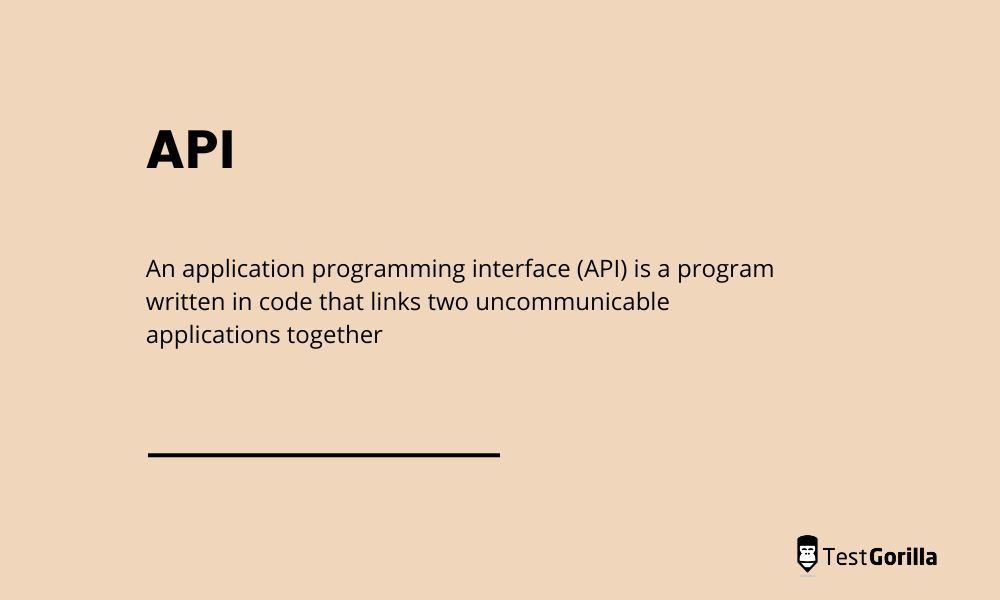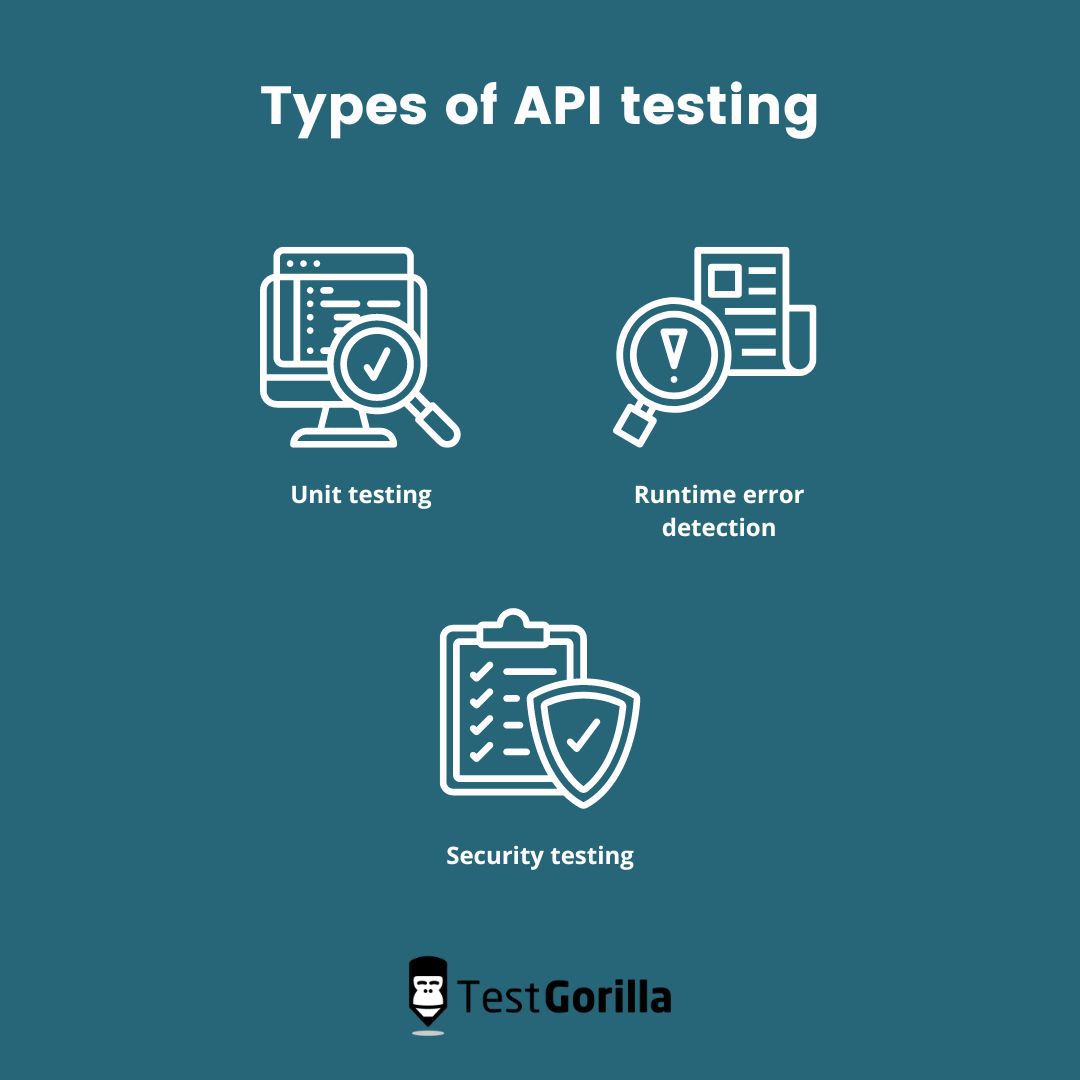APIs are crucial to the successful operation of a software application. Without them, apps would be much more difficult for companies to produce and consumers to use. As such, it’s critical to conduct API testing effectively.
Since API testing is such a highly technical task, you shouldn’t hire API testers based on their CVs.
The CV-screening method is vulnerable to many unconscious biases and isn’t a reliable way to determine whether applicants have the skills you need.
Skills-based hiring, on the other hand, accurately assesses candidates’ API-testing capabilities.
With TestGorilla’s pre-employment assessments, you’ll be able to hire top talent who are comfortable with even the most technical aspects of API testing.
For a complete guide on API testing, check out our article below. We’ll cover what API testing is and learn why it’s important to the software development process.
You can also use the headings in this post as API testing interview questions and consider the corresponding explanations as examples of ideal responses.
What is an API?
In basic terms, an application programming interface (API) is a program written in code that links two uncommunicable applications together.
An API is similar to an interpreter in the sense that enables two systems to communicate with each other when they would normally be unable to do so.
Let’s put this another way. You’re sitting in a restaurant in Spain. You want to order a lovely paella. However, you can’t speak Spanish, and the chefs only speak their native tongue. Luckily, a bilingual waiter approaches you, takes your order, and relays it to the kitchen. Thus, the waiter has facilitated communication between you and the kitchen staff.
In this scenario, you and the chefs are the two uncommunicable applications, and the waiter is the API that enables the communication to happen.
REST, Node.js, and Java are all commonly used to create APIs, so it’s important for API testers to understand how to use them.
What is API testing?
If an API is an interface that enables two applications to communicate with each other, then API testing is the process of assessing whether these connections function as intended.
We test APIs to ensure that what happens aligns with our expectations. It’s better for an unexpected result to occur during testing than after the API is released to the public.
The main purpose of API testing is to reveal any bugs, glitches, or errors in the software and make sure the API functions as it’s supposed to.
Software engineers examine various criteria when testing APIs, including security, performance, and reliability.
The best insights on HR and recruitment, delivered to your inbox.
Biweekly updates. No spam. Unsubscribe any time.
Types of API testing
There are multiple types of API tests you can perform. We’ve outlined a few of them below, including their definitions and purposes.
Unit testing: This involves testing individual lines (or units) of code to verify that they function correctly. This is the most basic form of API testing since it only involves examining independent operations.
Runtime error detection: This form of testing analyzes software by detecting and examining errors within another application. It is used to ensure an app runs smoothly.
Security testing: This important analysis procedure uncovers security vulnerabilities in a cybersecurity network or application. This API test has become crucial in the modern digital era.
What is the first step of API testing?
Setting up an API test can seem a little complicated. Here are a few things to consider when carrying out the initial steps to test an API:
It’s important to ensure your app’s database and server are configured properly
Consider which types of API tests you want to perform and what components of the API you want to examine
Understanding the API’s purpose is key to knowing which tests you should perform
What should I look for when testing an API?
If everything is running smoothly, API tests should return only positive results.
However, the tests may also return several different kinds of errors. These can include bugs, performance issues, inconsistencies, security vulnerabilities, missing or duplicate code, unused flags, and improper errors.
What are the advantages of API testing?
Performing API testing using software such as SoapUI or Postman is hugely beneficial for your applications. It not only roots out errors but reassures your clients and customers that your software functions optimally.
What’s more, you can easily integrate API testing with GUI testing, and it’s much more time-efficient than other forms of software testing. This is because it requires relatively little code, so it takes less time to run and process.
What’s the difference between API testing and GUI testing?
GUI stands for “graphical user interface.” It consists of the visual components of an application that users can see and interact with directly. In contrast, an API is written in code by software developers and is not visible to users when they run the program.
As such, the testing process is different for APIs and GUIs. API tests evaluate the behind-the-scenes processes – including connection, communication, and function – whereas GUI testing involves the application’s visible components.
The top priority of GUI testing is to assess what happens when a user interacts with an application. The testing criteria include the app’s layout, font, color scheme, images, and any visual element a user can interact with.
Hire the best API testers with TestGorilla
No matter what kind of software your organization works on, it’s essential to employ a reliable quality assurance team. This includes API testers who can perform API testing effectively.
With TestGorilla, you can use pre-employment tests like our Critical Thinking test to filter candidates and ensure you only interview the best talent. Given the significance of API testing, a thorough hiring process is paramount.
So, check out our products to see how TestGorilla can help your company hire top talent!
You've scrolled this far
Why not try TestGorilla for free, and see what happens when you put skills first.
















